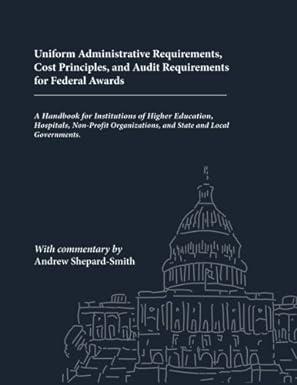Question
Pauline is an assistant manager in the audit division of KPMG, an accounting practice in Canberra. His most important client is Canberra Milk, a Canberra-based
Pauline is an assistant manager in the audit division of KPMG, an accounting practice in Canberra. His most important client is Canberra Milk, a Canberra-based supplier of milk products to Canberra supermarkets (turnover $400 million, profit before tax $1 million). Canberra Milk is experiencing financial difficulties, as an economic downturn and drought has meant milk production has declined and consumers are purchasing cheaper market alternatives. Canberra Milk is forecast to breach bank covenants next year and has begun to negotiate new credit terms. Canberra Milks bankers, Canberra Money, are insisting that it cut costs, and to enable it to do so they financed the construction of a new centralised milking facility. The facility became fully operational shortly before the year end, after a series of teething troubles. The most serious of these involved controls with respect to the proper cooling temperature to prevent milk from going bad after it is pasteurized (heated to kill bacteria). One incident, during a testing run of the new factory, resulted in milk inventory worth $1.5 million going bad and this milk was discarded. How to treat this spoilage has been of significant debate within the company. There are two options debated within the company: a) the first option is to treat the $1.5m spoiled milk as an operating expense, as this was an operational problem in commissioning the new factory; b) the second option is to capitalise the expense of the $1.5m spoiled milk (as a part of property, plant and equipment value) as part of the commissioning and trial costs associated with bringing the factory into operation. There is support in accounting standards for both treatments. Both options have a significant impact on the financial accounts. The expensing option drastically lowers net income (or records a loss) and would hide the fact that the new factory has resulted in lower overall production costs in line with budget projections. The capitalising option improves the balance sheet position and improves net assets (with respect to debt covenants) but also slightly reduces return on net asset calculations. Note that there is pressure on management to demonstrate to the bank that costs are indeed lower with the construction of the new factory. The finance director has been messaging their contacts that the business has rationalised its operations and is well placed to achieve revenue and earnings growth. In Paulines preparation work for the audit, Pauline discovers that the discarded milk had been capitalised when reviewing fixed asset values. Canberra Milks business is capital-intensive, with fixed assets totalling $500 million. Paulines gut feeling is that expensing the milk is likely the right treatment of this event. Pauline finds a memo following a board meeting that suggests 7 members of the board voted to capitalise the value of the discarded milk, while 5 voted to expense. Pauline surveys fellow audit managers at KPMG and out of the 20 responses, 13 colleagues suggest that expensing is the correct treatment, but 7 suggest that capitalisation is acceptable due to commissioning the new factory. No mention of the discarded milk is made in the draft accounts.
Required Explain how Pauline should proceed with this audit. How should Pauline treat the audit of the $1.5m capitalization of milk.
Step by Step Solution
There are 3 Steps involved in it
Step: 1

Get Instant Access to Expert-Tailored Solutions
See step-by-step solutions with expert insights and AI powered tools for academic success
Step: 2

Step: 3

Ace Your Homework with AI
Get the answers you need in no time with our AI-driven, step-by-step assistance
Get Started


